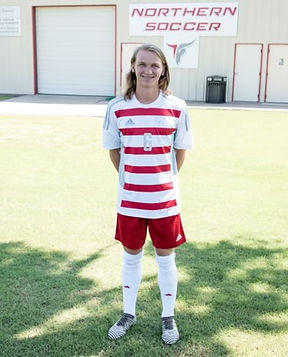Special Education In Oklahoma
How Effective Is Special Education?
By: Emmett McKeel, Daniel Mutai, Gavin Pendergraff
STILLWATER,OKLA — A teenage boy stands in front of his principal and teachers, fingers wringing on the edge of his hoodie. His grades are failing and he isn’t going to be able to graduate high school.
“As an ex-college professor, I know that in college they aren’t going to care to make the changes for you. They won’t care,” said one of Tegan McWhirt’s teachers.
These words were repeated to then-highschool student Tegan McWhirt in one of his routine individualized education plan meetings, when he was struggling in school due to his learning disabilities.
![IMG_7152[1].JPG](https://static.wixstatic.com/media/6e6995_bd3ffb7a81b74bafbb233f87c50c8bc2~mv2.jpg/v1/crop/x_0,y_30,w_745,h_930/fill/w_333,h_416,al_c,q_80,usm_0.66_1.00_0.01,enc_avif,quality_auto/IMG_7152%5B1%5D_JPG.jpg)
According to the national center for learning disabilities Over 40,000 children across Oklahoma are affected by learning disabilities. Education acts and federal literacy laws require public schools to conduct tests on students from kindergarten to third grade to ensure students are provided with accommodations that will help them later in their school careers.
For McWhirt, this is not the case. As a student with ADHD, autism and dysgraphia Tegan’s school career has always been rocky. While the first two of his disorders are well known, dysgraphia is a learning disorder schools are less educated about and affects handwriting abilities. The problems began for McWhirt in sixth grade.

Due to his disabilities and outside familial problems McWhirt transferred to online school for seventh grade. Though this allowed him to spend more time with his family, his ADHD made staying on top of online classes difficult. After failing tenth grade he decided to re-enter the public school systems. Owasso High School was its own battle. Though he had an IEP and a 504, it didn’t help his experience.
“The problem is that half of my teachers didn’t follow it, and the other half didn’t read it. It was wretched,” said McWhirt.
“I had maybe one or two teachers who cared to actually utilize it and help me.”
By junior year McWhirt and his mother were in near monthly meetings with school administration and teachers due to the mistreatment he faced. Owasso is not the only district that has these problems. Schools across the country are receiving backlash these past couple years because of the negligence of the 504 and IEPs that are presented to them from families and specialists. In Michigan, families of Ann Arbor public schools are suing the state and district for failure to provide help.
“12,229 public schools don’t have a single 504 plan. Also, 327 public school districts don’t have 504 plans at all. That’s one out of every eight public schools and school districts nationally, according to Zirkel. The analysis excludes small schools and districts. So those numbers could be even higher,” according to understood.org.
McWhirt’s IEP should have granted him extended testing times and locations, he was granted to leave a few minutes before the bell due to overwhelmingly crowded hallways, and most importantly reduced homework. His 504 was for his medical restraints.

These words were repeated to then-highschool student Tegan McWhirt in one of his routine individualized education plan meetings, when he was struggling in school due to his learning disabilities.
Doug Wilson has been a part of the Texas school system up until he left for college in Oklahoma for his freshman year. Wilson had a 504 program that helped him with his dyslexia.
“It gave me an opportunity to let myself learn new ways to cope with dyslexia without the help of another person”

The transition can be difficult for some students because of the variation of priorities between the states. Oklahoma and Texas differ in ranking in education, though Doug Wilson had no problem adapting to the new state and special education program he faced between Oklahoma and Texas. When asked if there was a difference of special education between his time in Oklahoma and Texas he said,
“The program itself didn't change much other than being able to have someone present helping you. Instead we were just given extra time to study and finish material."
As Director of Special Services at Stillwater Public Schools Melissa Kifer explains to us there is a fundamental difference between an IEP and a 504 plan.
An IEP -or Individualized Education Program- is designed to help students with learning disabilities and specialized education. This can include longer testing times, tutoring, help with dyslexia and more. An IEP may include students with ADHD, autism or dyslexia.
![IMG_3331[1].JPG](https://static.wixstatic.com/media/6e6995_ec7be88ac493493a8879ee0460e4e42f~mv2.jpg/v1/crop/x_0,y_160,w_1000,h_1066/fill/w_288,h_307,al_c,q_80,usm_0.66_1.00_0.01,enc_avif,quality_auto/IMG_3331%5B1%5D_JPG.jpg)
“An IEP falls under the Individuals with Disabilities Education Act (IDEA). This federal act ensures access to special education and related services for eligible children with disabilities. An IEP is a working document that allows for necessary accommodations, and a student is also able to receive specially designed instruction with an IEP, meaning they get tailored instruction unique to them based on their disability, goals, and objectives,“ According to n2y.com
“A 504 on the other hand is created for the purpose of helping students with any disabilities. A 504 helps those who may be deaf, wear glasses, or any disability falling under Americans with Disabilities Act protection.” Said Kifer.
Kifer explains that getting an IEP is done through an application and the school district will be able to give you an evaluation of your child. After the evaluation a specialist will be referred to you as a parent may want to try and evaluate their childs’ potential disability. From here the specialist will be able to work with the school staff to accommodate your child to their specific needs so that they may get the most out of their education.
“These goals are addressed by a special education teacher in the student’s least restrictive environment (LRE) to help the student make progress in areas affected by their disability.”
An interesting fact noted by Kifer is that for reasons not yet entirely determined, there has been a significant rise in testing done by Stillwater Public Schools in the last year following the peak of COVID-19. The pandemic has rose the amount of IEPs and 504s within the city for
“This year, there are 1036 students on an IEP throughout the school district. This time last year, it was 920. The biggest difference is in the amount of students evaluated, going from a typical 100 students a year to over 300.”
A Certified Occupational Therapy Assistant in Collinsville hypothesizes that for many young children this is due to missing formative years in a classroom. With online schooling and Zoom classes for the last two years, young grade school students were not able to practice handwriting and small motor skills that come with it. She sees over 70 children and assists them weekly.
“A lot of these kids didn’t see any writing or handwriting practice when they were schooling at home. They’re all on their chromebooks and typing.”